Book Choices for today:
About Crustaceans Cathryn Sill
Crabs and Other Crustaceans Sally Morgan
Zoology: (first circle)
Need for lesson – Pictures of different crustacean animals and a pet hermit crab.
Zoology 45
Crustaceans are an invertebrate group of animals whose skeletons are on the outside of their bodies. Most live in salt water and breathe through gills just like fish. They have many pairs of legs and their bodies are jointed. Crustaceans use feelers for touching, smelling, and feeling. Crabs, shrimp, lobsters, and barnacles are all crustaceans. Some of them can swim like crabs and shrimps. Lobsters can only scuttle across the ocean floor. Barnacles stick to a hard spot in the ocean and never move. They may stick to the poles of a pier, or on rocks.
The hermit crab is also a crustacean. There are two main types of hermit crabs: Land hermit crabs and marine hermit crabs. So some live in the oceans and some live on the land. They do not grow their own shells. They have to change and find different ones as their bodies grow bigger, since they need a bigger shell. Hermit crabs are nocturnal. What does nocturnal mean? Hermit crabs have ten jointed legs. The back two are very small and the front two are large pincers.
Shrimp have five pairs of walking jointed legs on the thorax and five pairs of swimming legs on the abdomen. So how many legs do they have altogether? Shrimp are omnivores, so what do they eat? Lobsters also have ten legs. An interesting thing about lobsters is that their teeth are in its stomach, called the gastric mill area of the body. A lobster can be blue, yellow, orange, or white. It is only when they are cooked, that they turn a red color. Many people like to eat lobster and shrimp. Have you tried these two crustaceans?
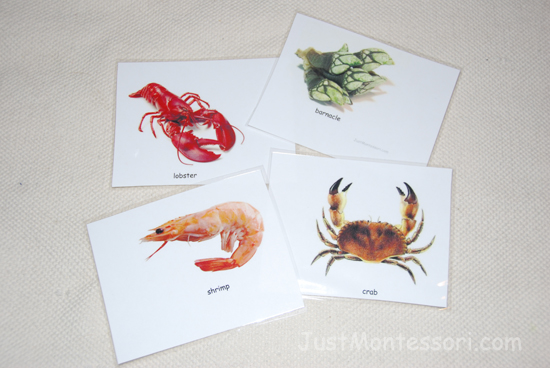
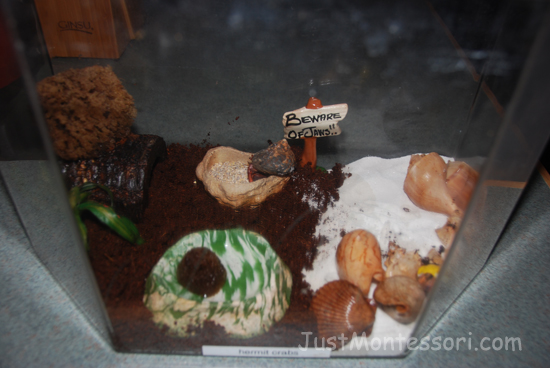
Art:
Lobsters – Children can paint four egg carton pieces to make lobsters. Add paper or pipe cleaner legs. Add paper pincers and a tail.
Crabs – Children can paint small paper bowls or use tissue paper squares to make crabs with. Add the legs and pincer claws.
Lobsters – Paint the bottom of a child’s foot and make a print of it on a piece of paper. This is the body of the lobster. Paint each hand of the children and these become the pincers of the lobster. Add feelers to the hand and foot lobsters.
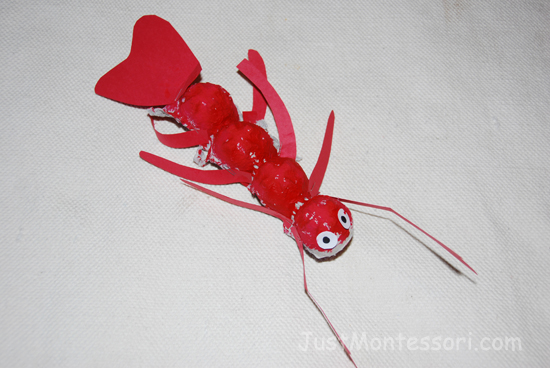
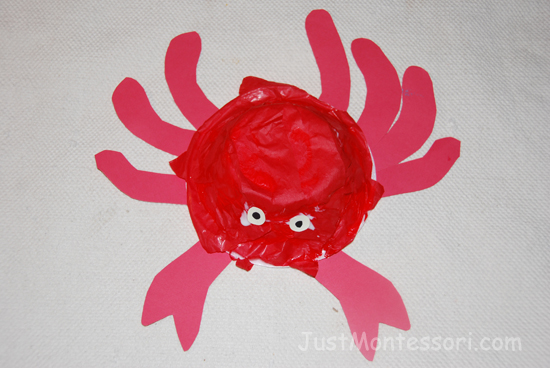
Zoology: (second circle)
Need for lesson – A House for Hermit Crab by Eric Carle
This is for the book on the shelf work. I just used craft foam and felt to make the pieces to go along with the story. The pictures for the story are from kidssoup.com. along with the sequence and matching work below. Always remind children of fiction and non-fiction.
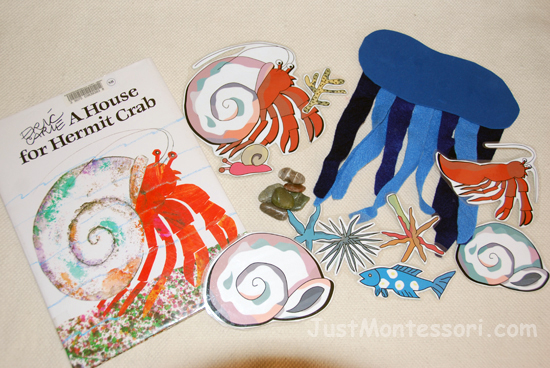
Additional Work:
Sequence – Children lay out the cards across their mat in sequential order of the story. (kidssoup.com)
Matching – These are matching cards of things that are in the story. (kidssoup.com)
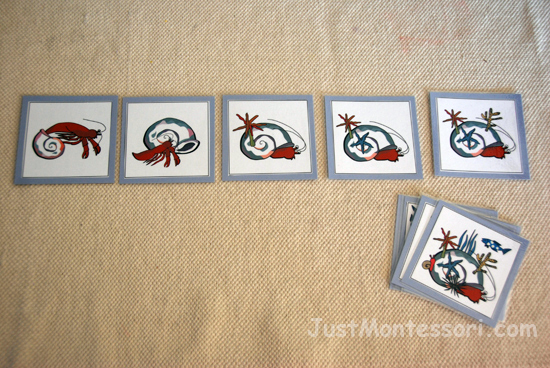
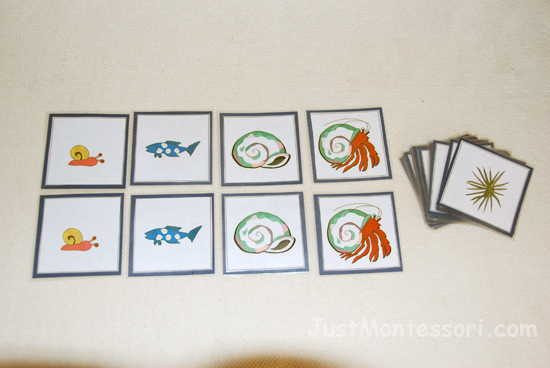
Songs/Poems:
Hermit Crab (by Meish Goldish)
Hermit crab, you live all alone In an empty shell in the sea. With all those fish Don’t you ever wish For a little company?
Hermit Crab (by Sandra Liatsos)
I watch him scurry on the sand To find a house that’s second hand. He crawls in someone else’s shell And stays because it fits so well. Imagine if we did the same Just barged right in and staked a claim To an empty house that fit Then settled down to live in it.
Song Choices for Today:
Ocean Friends McMillian Song Set
Kingdom of the Crab Banana Slug String Band
Buy Weeks 35-38 PDF
-
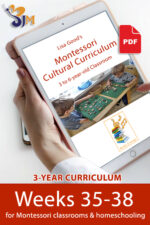 (J) Weeks 35-38$25.00
(J) Weeks 35-38$25.00
